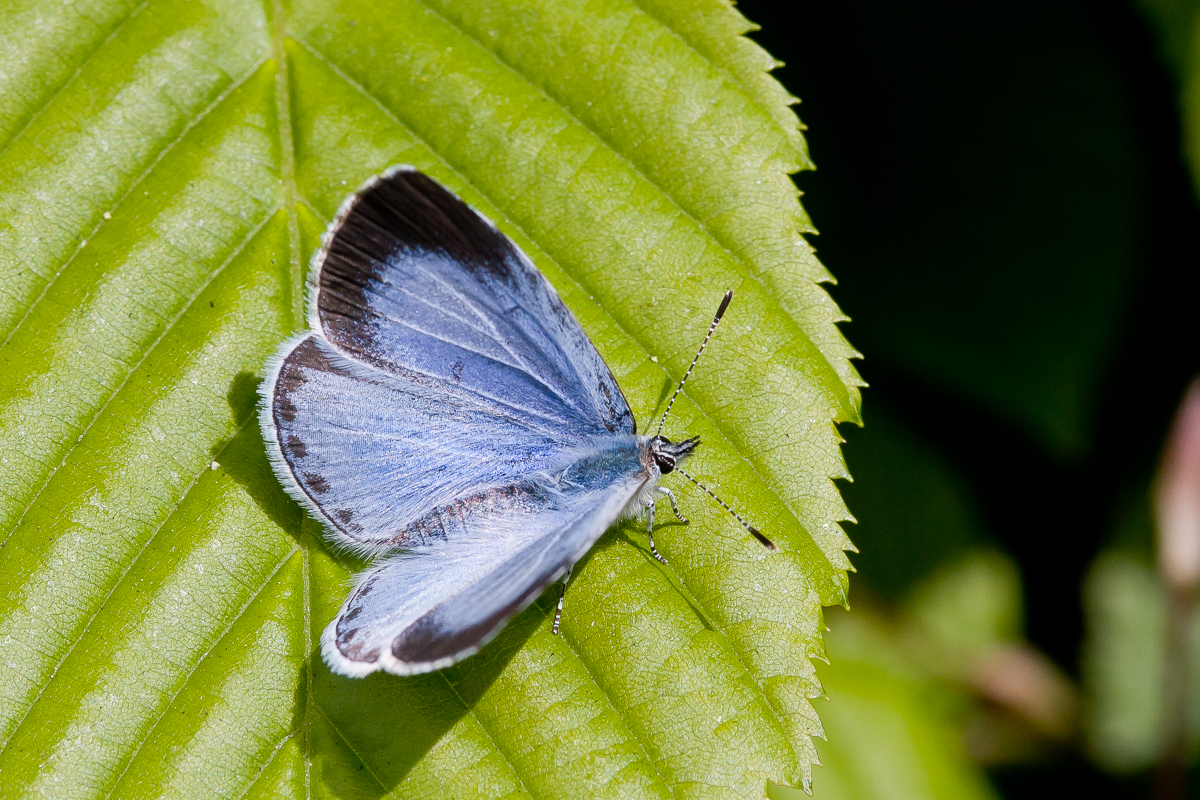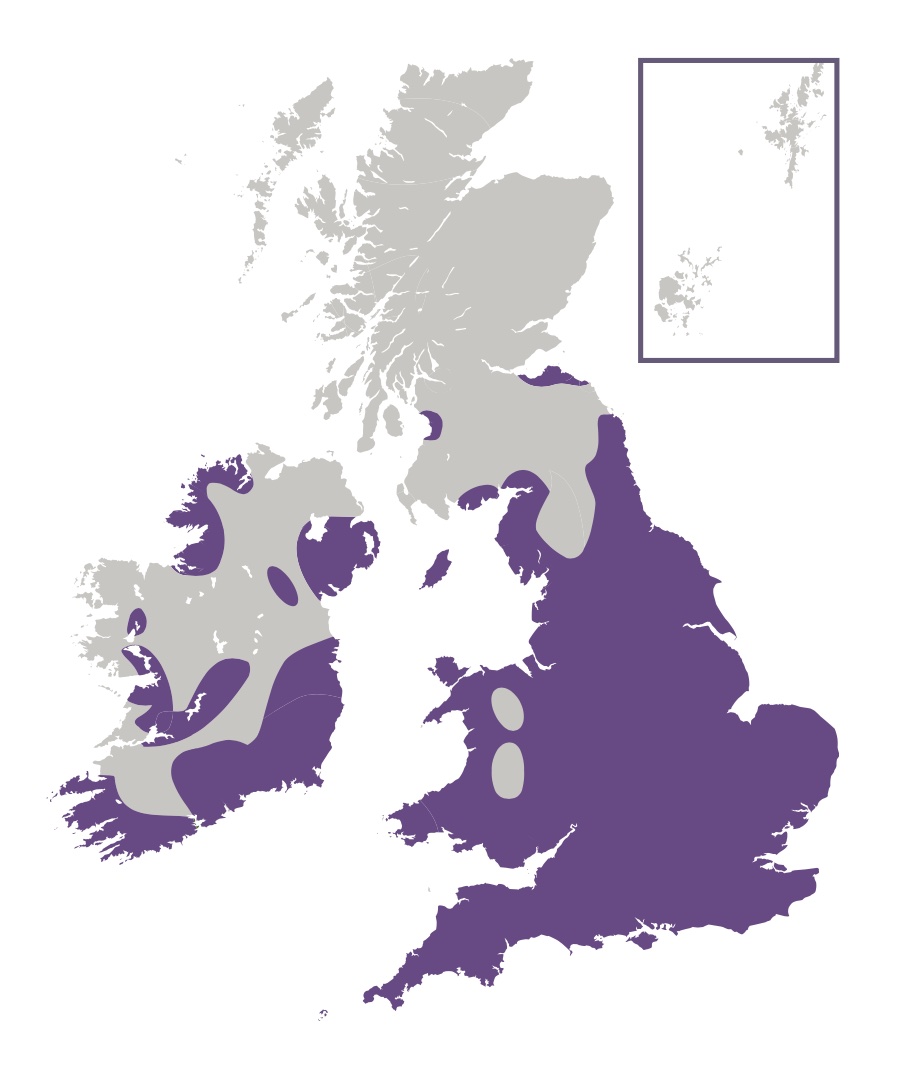
Photo © Peter Eeles
The Holly Blue is primarily found in the southern half of the British Isles, and is a frequent visitor to gardens. This species is renowned for fluctuating wildly in numbers, forming a predictable cycle over a few years, believed to be caused by parasitism from the wasp Listrodromus nycthemerus whose sole host is the Holly Blue. The wasp lays its eggs in Holly Blue larvae, with a single adult wasp eventually emerging from the Holly Blue pupa. In England and Wales this species is widespread and common, south of a line running from Cumberland in the west to County Durham in the east. This species is also found on the Isle of Man and throughout Ireland, but is absent from Scotland except as a scarce vagrant.
The adults are most easy to identify when at rest, since their undersides are distinctive among the blues found in the British Isles, with the possible exception of the Small Blue, which is much scarcer (and, as its name implies, much smaller). The male and female are distinguished by their uppersides, where the forewings of the female have broad black borders that are absent in the male. However, the adults only tend to open their wings in weak sunshine. Second brood females generally have broader black borders than first brood females.
A particular characteristic of this blue is that it will fly high off the ground, distinguishing it from other blues. In this respect, they are more similar in behaviour to a hairstreak.
Both sexes visit a variety of nectar sources such as Bramble, Holly and Forget-me-not. However, they do seem to have a preference for honeydew rather than nectar. The males will also come down to the ground to take salts and minerals from damp mud and animal waste.

This butterfly is found in many different types of habitat, including gardens, churchyards, woodland, parks, and anywhere its foodplants and nectar sources can be found.
Adults feed primarily on Honeydew (N/A). brambles (Rubus spp.), Bugle (Ajuga reptans), buttercups (Ranunculus spp.), forget-me-nots (Myosotis spp.), Holly (Ilex aquifolium), Ivy (Hedera spp.), thistles (Carduus spp. and Cirsium spp.), Water Mint (Mentha aquatica) and Wild Privet (Ligustrum vulgare) are also used.
The primary larval foodplants are Holly (Ilex aquifolium) and Ivy (Hedera spp.). brambles (Rubus spp.), buckthorns (Frangula alnus and Rhamnus cathartica), Dogwood (Cornus sanguinea), Gorse (Ulex europaeus), snowberries (Symphoricarpos spp.) and Spindle (Euonymus europaeus) are also used.
